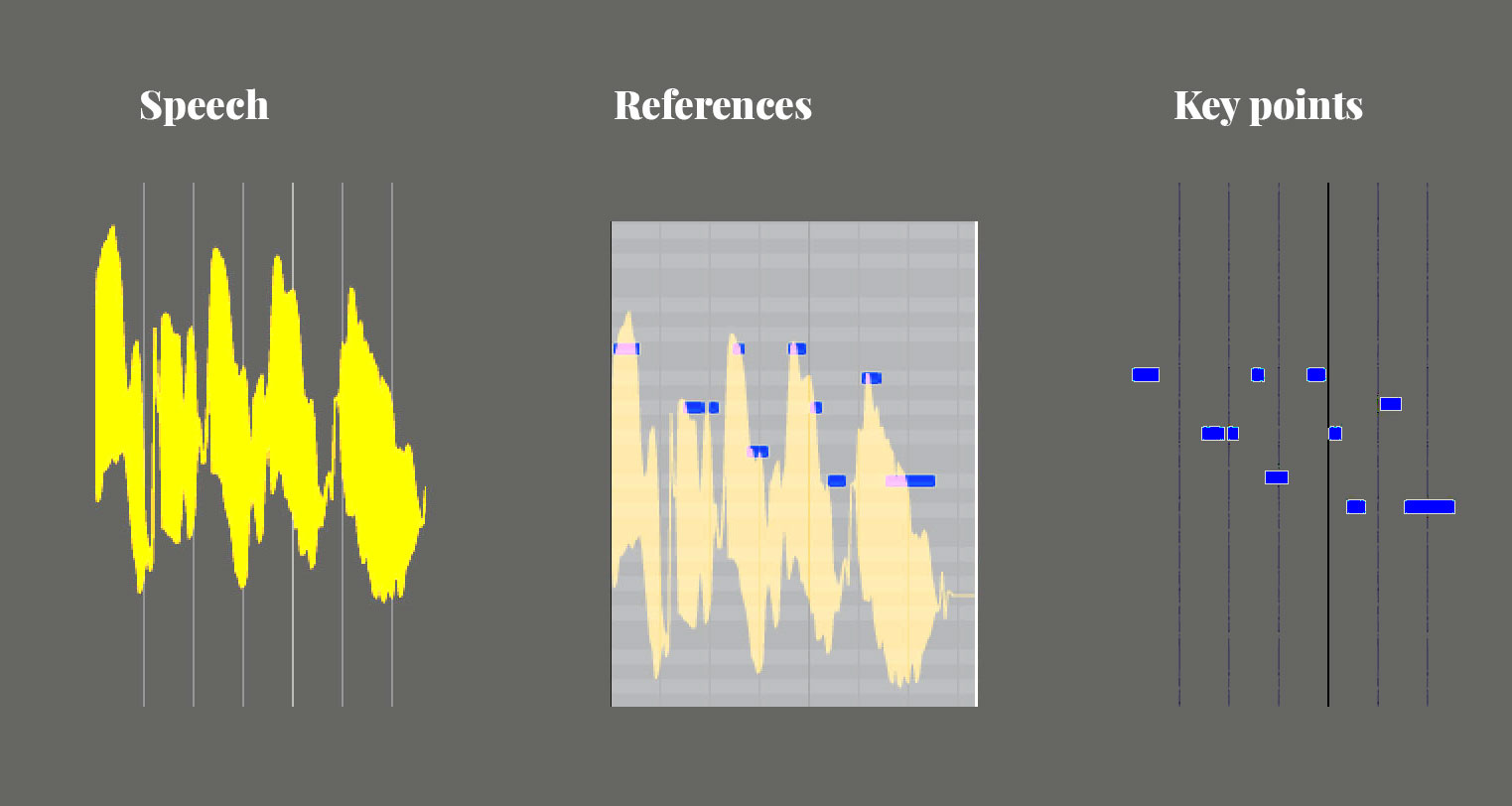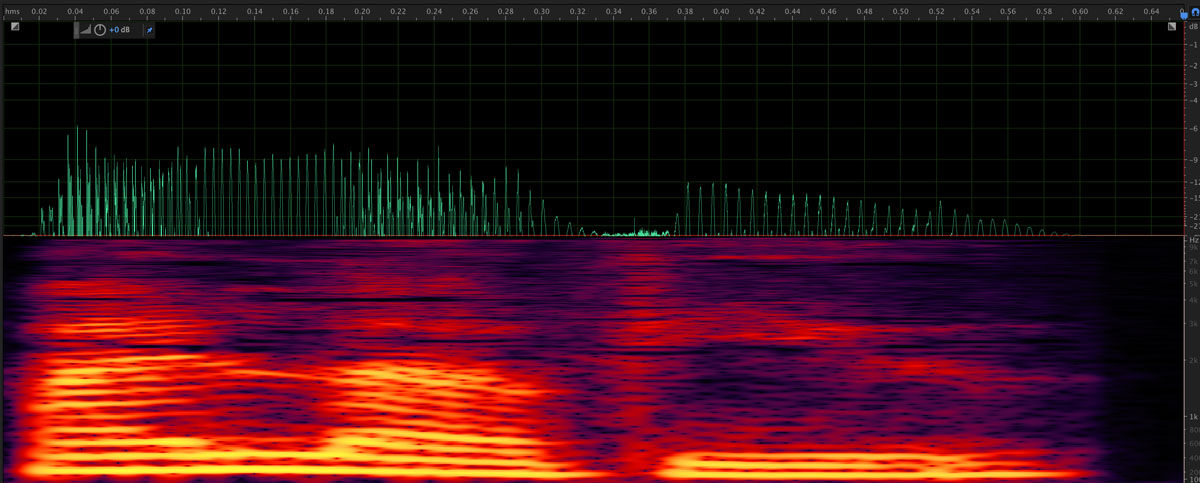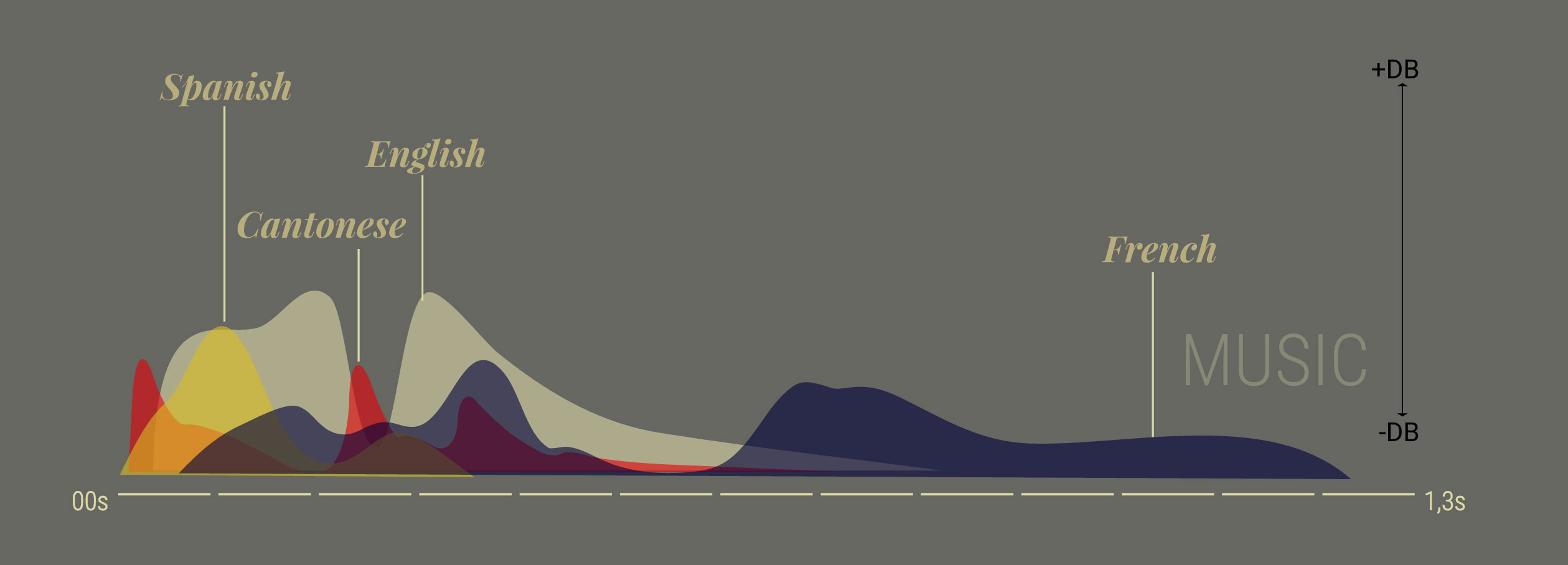How it works
Purely for your entertainment, and not based on scientific research, we recorded people saying the same phrase in four languages: English, Cantonese, Spanish and French. We then converted the recorded sounds into their equivalent musical notes to see how the words would play out as melodies.
Click here if you want to learn more about the process
The music of language
This graphic is about extracting the sounds of words rather than listening to their meaning. Even when we say “I love you” in a different language, or change the instrument we play the equivalent notes on, the sound remains remarkably similar. See for yourself by playing around with the recorded phrases below, and toggling between languages and instruments
“Music gives a soul to the universe, wings to the mind, flight to the imagination and life to everything”
― Plato
Audio-visual phrase
Here we take a longer phrase – “If music be the food of love, play on” – to produce a more complex sound. Pay attention to the Cantonese interpretation – the banjo repeats the key points, but in a higher decibel (dB) scale. Again, the final combination is in your hands. Go ahead and play the famous Shakespeare quote in sounds matched to different languages
Choose, combine and play
- English
- Cantonese
- Spanish
- French
If music be the food of love, play on
VOICE MATCH
[at the same dB scale & time ]

Download these audios
Why these instruments?
English horn
Surprisingly, the English horn isn’t English. Its origins are in Central Europe, where it was known as the engellisches horn, meaning “angelic horn”. Englisch also meant “English” in the parlance of the time, so the angelic horn became known over time as the English horn. An instrument originally named for spiritual connotations seems ideal to represent amorous subjects in English
Banjo
The modern version of the qinqin closely resembles the Western banjo, and is particularly popular in southern China, Hong Kong and Macau. Chinese musical instruments traditionally fell into eight categories: silk, bamboo, wood, stone, metal, clay, gourd and skin. As a plucked instrument, the qinqin falls into the category of silk. The smooth, tactile qualities of silk are ideal for the language of love
Acoustic guitar
If there’s a musical instrument more closely associated with Spain than the guitar, we’ve yet to hear of it. Paco de Lucia and Andrés Segovia are renowned for their expressive, passionate guitar performances. The perfect instrument for serenading loved ones, the acoustic guitar picked itself to represent Spanish
Muted trumpet
Paris is known as a city of love. When American jazz great Miles Davis first visited the city, he found the freedom and respect he felt lacking in his segregated homeland and immediately fell in love with the place. Davis is probably the best-known proponent of the muted trumpet – or sourdine in French – and used it with great romantic effect on performances such as My Funny Valentine and When I Fall in Love

Enjoying SCMP graphics?
You may want to take a look at other projects from our section
About this graphic
Our goal was to give you an entertaining tool to play with in celebration of the day of love and friendship. But here is a deeper look at how we built this graphic
First, we took audio recordings of the three phrases: “I love you”; “If music be the food of love, play on”; and “Happy Valentine’s Day”. Each phrase has a version in English, Cantonese, Spanish and French
The audio files gave us a graphic, showing time on the x-axis and decibels on the y-axis. The next step was to identify key points in the spectrum based on the position of peaks and troughs, as well as looking at the variations in timing
These key points are the guides for playing the instruments to create a close musical equivalent of the phrases. We made the music with an audio synthesiser, playing the instruments based on the key points identified above
We used four different languages represented by a single instrument. We used the guitar for Spanish, the banjo for Cantonese, muted trumpet for French, and, well… the English horn for English
Once we got the instrumental recordings, we mixed them with the speech to prove the match. The small graphics at the bottom of the sections contain the simplified versions of the spectrums for speech and instrumental audio
close this panel




